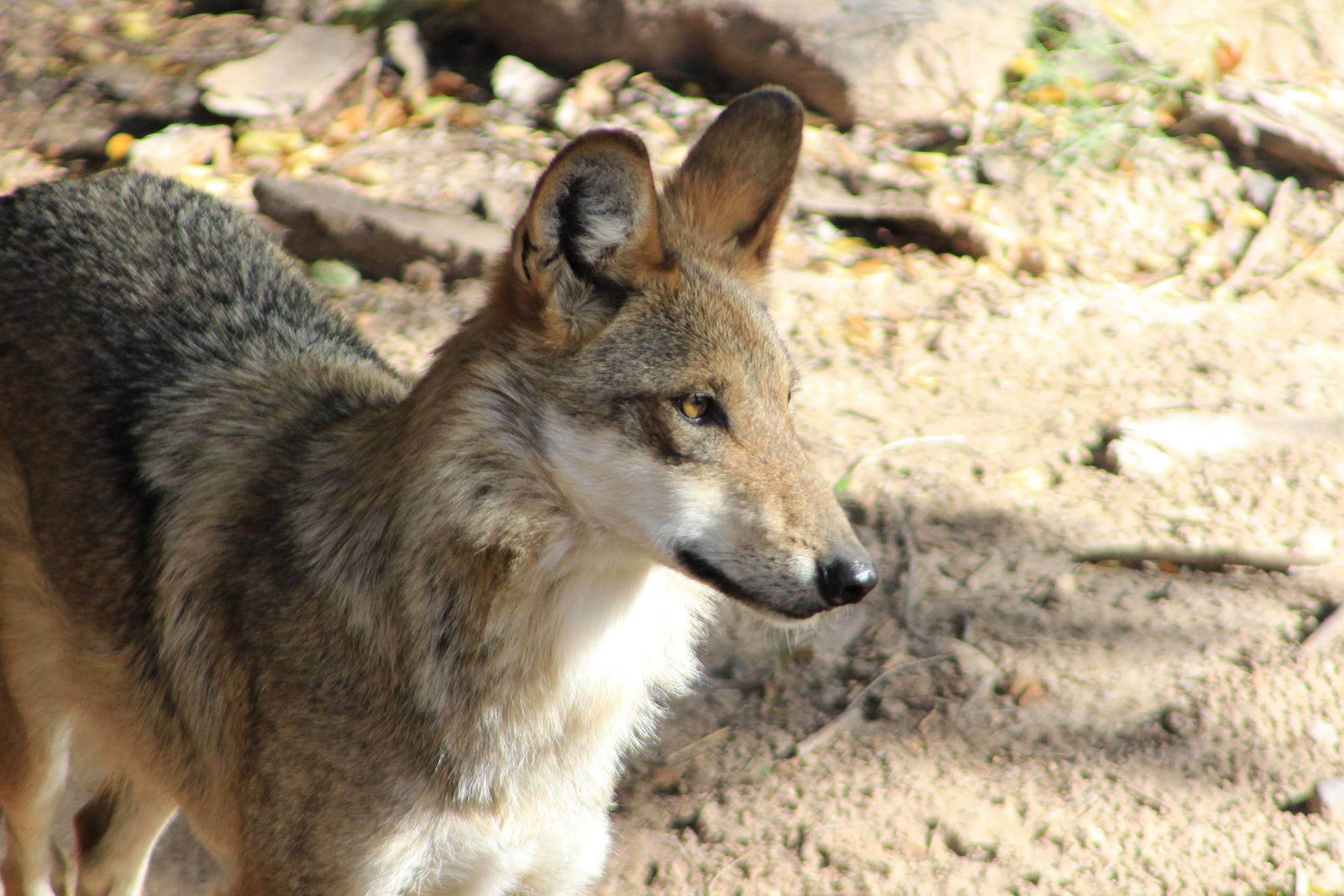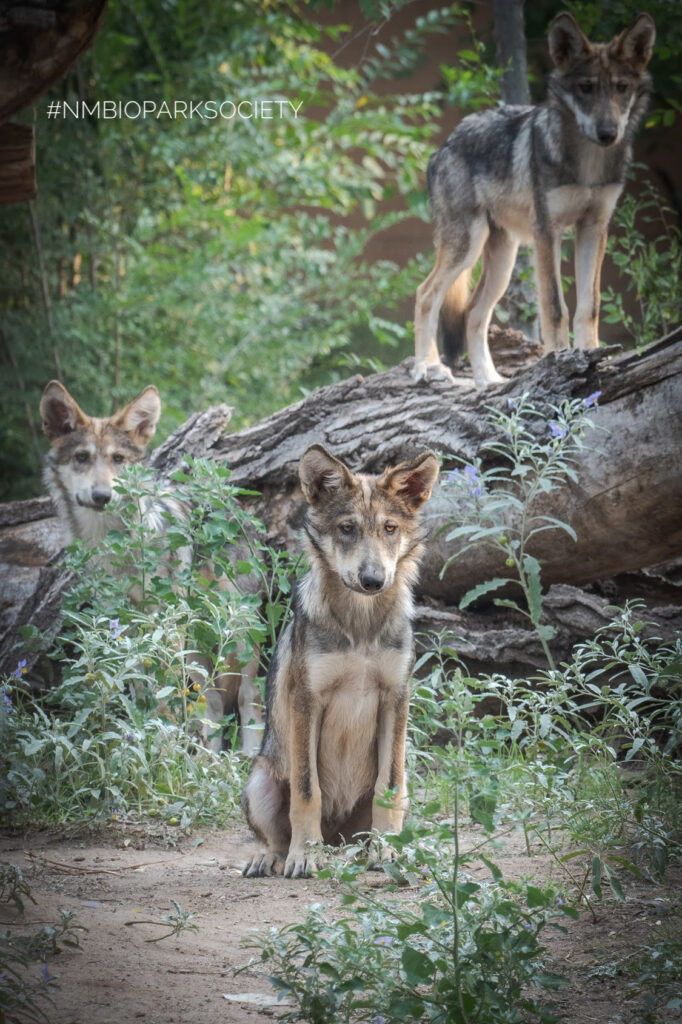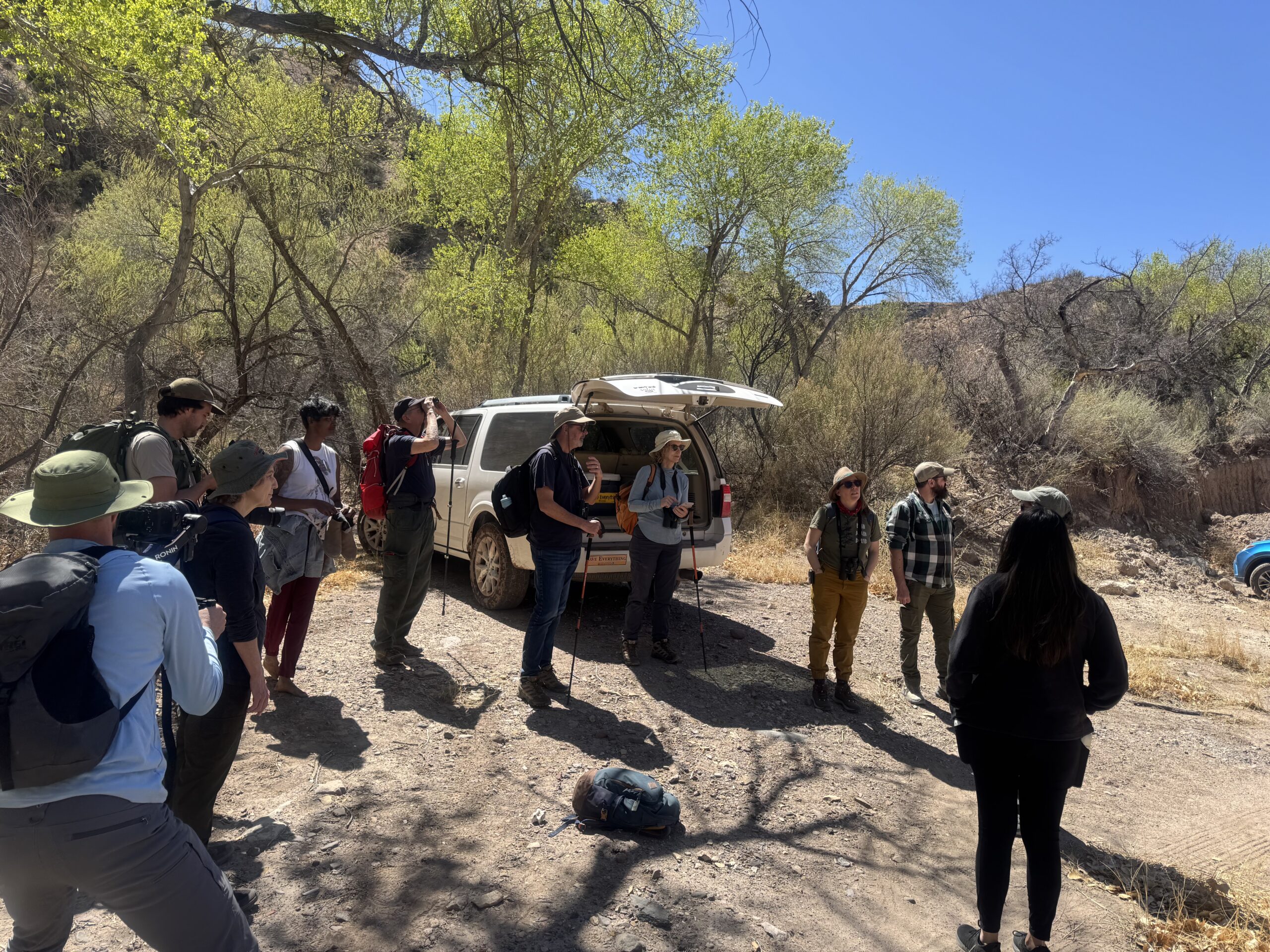LoboWeek 2025 is a call to action for those who love wolves.

Cindy, a female wolf at the ABQ BioPark was sent to Sevilleta National Wildlife Refuge for pre-release into the wild in in 2021. Photo: ABQ BioPark.
LoboWeek 2025: Fighting for Real Solutions for Endangered Mexican Gray Wolves
Each year, LoboWeek offers an opportunity to celebrate and advocate for one of the most endangered mammals in North America: the Mexican gray wolf. Hosted by the Wolf Conservation Center, this annual event sheds light on the plight of these remarkable wolves and the ongoing challenges they face in the wild.
While the most recent population survey shows an 11% increase in their numbers, this doesn’t tell the whole story—Mexican wolves are still in serious danger, and without bold changes, their future remains precarious.
A Population in Peril
According to the Arizona Game & Fish Department, the 2024 minimum population count reached 286 wolves across Arizona and New Mexico. While this marks the ninth consecutive year of growth, the long-term viability of the species is threatened by low genetic diversity, political obstacles, and persistent human-caused mortality.
Mexican gray wolves were nearly wiped out in the wild before being reintroduced in 1998, and every individual wolf today traces back to just seven founders. With such a limited gene pool, conservation efforts must focus on increasing genetic diversity—not just numbers—if these wolves are to truly recover.
Cross-Fostering Isn’t The Answer
One of the biggest obstacles to meaningful recovery for lobos has been the U.S. Fish and Wildlife Service’s (USFWS) reliance on cross-fostering instead of releasing bonded pairs of wolves into the wild.
Since 2016, 126 captive-born pups have been placed into wild dens in an attempt to introduce new genetics. However, the success rate is abysmally low—less than 16% of fostered wolves have survived to breeding age and produced pups.
Meanwhile, wolves born and raised in captivity remain behind fences, despite their potential to form breeding pairs that could strengthen the wild population. The cross-fostering program has been a politically convenient distraction from the real solution: releasing bonded wolf pairs that can establish new packs and contribute to genetic recovery.
Breaking the I-40 Barrier
Another major roadblock for recovery is the arbitrary boundary at Interstate 40, which currently limits Mexican gray wolf recovery around invisible lines on a map for political purposes. Wolves naturally disperse in search of new territory, yet the USFWS does not allow them to roam beyond this artificial line.
This restriction prevents them from accessing additional suitable habitat in northern Arizona, New Mexico, and even Colorado, where they could potentially cross-breed with that state’s gray wolves to bolster genetic diversity and establish a more resilient population.
If USFWS is serious about lobo recovery, it must remove the I-40 boundary and allow these wolves to expand into areas where they are desperately needed.

Mexican gray wolf pups born in May 2020 at the Albuquerque BioPark. Photo by ABQ Bio Park.
Poaching and Livestock Conflicts: A System Rigged Against Wolves
While Mexican gray wolves struggle to survive in the wild, they are routinely targeted by illegal killings—many of which go unpunished. Such poaching is often undetected and not only a direct threat to wolf recovery but is also enabled by a broader system that favors livestock interests over wildlife protection. The case of Craig Thiessen, a rancher who brutally killed at least one young Mexican wolf caught in a trap, exemplifies how lenient consequences for such acts reinforce a culture of impunity—one that is mirrored in the misconduct and bias within Wildlife Services. In 2022, an investigation by The Intercept exposed fraud and misconduct within Wildlife Services, the federal agency tasked with handling livestock-wolf conflicts.
Despite these enormous revelations, little has changed. The livestock industry continues to exert enormous influence over wolf management, often leading to wolves being removed or killed at the behest of ranchers.
Last year, 23 conservation organizations, including Wildlife for All, condemned the removal of the entire Kendrick Peak pack in Arizona, revealing how tilted decision-making for lobos is in favor of livestock interests, which disproportionately disrupts recovery efforts and ignores non-lethal coexistence solutions.
This lack of transparency and accountability underscores the broken nature of the system—one that consistently prioritizes livestock interests over science-based wolf conservation.
The Fight for the Endangered Species Act
In the midst of LoboWeek 2025, the threats to Mexican wolves are compounded by ongoing political attacks on the Endangered Species Act (ESA). Right now, the Republican-led House of Representatives is considering legislation that would weaken the ESA and strip protections for wolves nationwide.
One bill, the ESA Amendments Act of 2025, would gut the law’s ability to protect imperiled species, making it easier to delist them and harder to secure new protections. Another bill, the extremely misleadingly named Pet and Livestock Protection Act of 2025, would remove gray wolves from the ESA entirely and prevent future legal challenges to their delisting.
If passed, these bills would have catastrophic consequences not just for Mexican wolves, but for all endangered wildlife in the U.S. This is why we must act now to defend the ESA and push for real solutions that prioritize wolf recovery over industry profits.
Making matters worse, former Wyoming Game and Fish Director Brian Nesvik—a longtime opponent of wolf protections and architect of the state’s extreme anti-wolf policies—is being considered for U.S. Fish and Wildlife Service Director, a move that would further endanger the integrity of the ESA and put wolf recovery in even greater jeopardy.
Take Action for Lobos during LoboWeek 2025
LoboWeek 2025 is more than just a celebration—it’s a call to action. Mexican wolves need us to fight for their future, and here’s what you can do:
- Call your House Representative at 202-224-3121 and demand they protect the Endangered Species Act and oppose any legislation that weakens wolf protections.
- Call your Senators and urge them to reject Brian Nesvik as USFWS Director—we need leadership that prioritizes conservation, not industry interests.
- Advocate for real recovery efforts for Mexican gray wolves, including releasing bonded pairs, allowing wolves to roam beyond I-40, and holding poachers and Wildlife Services accountable.

Members of the Wildlife for All staff, board, and advisory board prepare for a hike to remotely view Mexican gray wolves at the start of LoboWeek 2025.
The Wildlife for All team recently had the privilege of observing eight Mexican wolves in pre-release pens at our retreat in New Mexico—a sight that took our breath away. These wolves deserve a chance to roam wild, raise their young, and reclaim their place in the Southwest.
Let’s make sure LoboWeek 2025 is the year we demand the real solutions they desperately need.
For more ways to take action, be sure to follow Lobos of the Southwest and use their action toolkits to add your voice to current campaigns.
